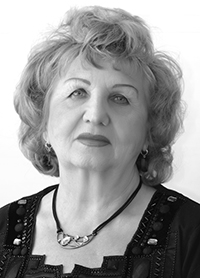COMPETITIVE PERFORMANCE MODELING SKILLS TRAINING METHOD: TESTS AND BENEFIT ANALYSIS
Keywords:
volleyball, actions modeling, educational experiment.Abstract
Objective of the study was to develop and test benefits of a new competitive performance modeling skills training method in application to the skilled 17-19-year-old volleyball players.
Methods and structure of the study. We sampled for the competitive performance modeling skills training method testing experiment the 17-19-year-old Class I/ II players (n=28) and split them up into Reference and Experimental Groups (RG, EG) of 14 people each. Pre-experimental physical fitness tests (including the 3/ 6m sprints (s); standing long/ high jumps (cm); and 1kg fitball jump throws – straight and left-/ right-turn ones) found insignificant intergroup differences (p>0.05). Pre-experimental technical fitness tests (including the situation-specific response efficiency; motor skills control on the move; and situation-specific attacking skills tests) also found insignificant intergroup differences (p>0.05). The RG training in the experiment was standard, and the EG training was complemented by the new competitive performance modeling skills training method.
The competitive performance modeling skills training method offered special training tools to excel the specific perceptions, attention control, motor memory and a range of other individual intellectual and physical qualities.
Results and conclusion. The new competitive performance modeling skills training method was tested beneficial for the situation specific responses and control excellence purposes as verified by a set of the group pre- versus post-experimental physical / technical fitness tests, with special improvements in a range of intellectual performance and practical aspects. The improved competitive performance modeling skills were found to contribute to the game reading, forecasting and analyzing abilities for fair analyses of the own/ opponent’s technical performance of special importance for the competitive experience building aspect.
References
Avramova N.V., Nazarenko L.D. Formation of ability to predict motor actions of volleyball players aged 15-17 years old. Fizicheskaya kultura: vospitanie, obrazovanie, trenirovka, 2012. no. 2. pp. 34-36.
Burtsev A.V. Improving spatial-temporal orientation of skilled volleyball players. Pedagogiko-psikhologicheskie i mediko-biologicheskie problemy fizicheskoy kultury i sporta. 2011. No.1. pp. 34-38.
Kashirin V.A., Burtsev A.V., Nazarenko L.D. Structural approach to development of agility in volleyball players. Ulyanovsk: UlSU publ., 2009. 132 p.
Nazarenko L.D., Anisimova E.A. Education in sports. Moscow: Teoriya i praktika fizicheskoy kultury i sporta publ., 2015. 80 p.

Additional Files
Published
Versions
- 17-01-2022 (2)
- 07-01-2022 (1)

